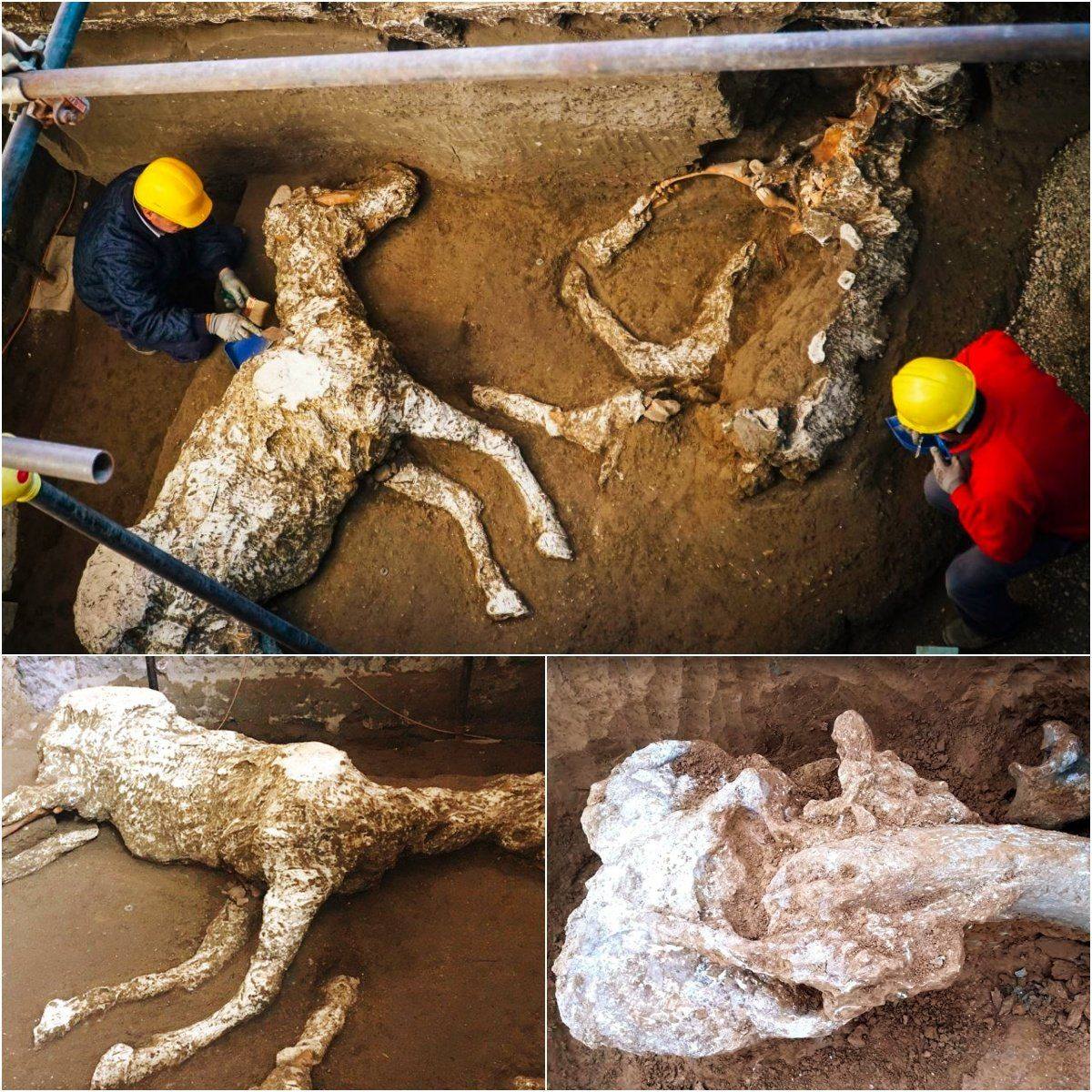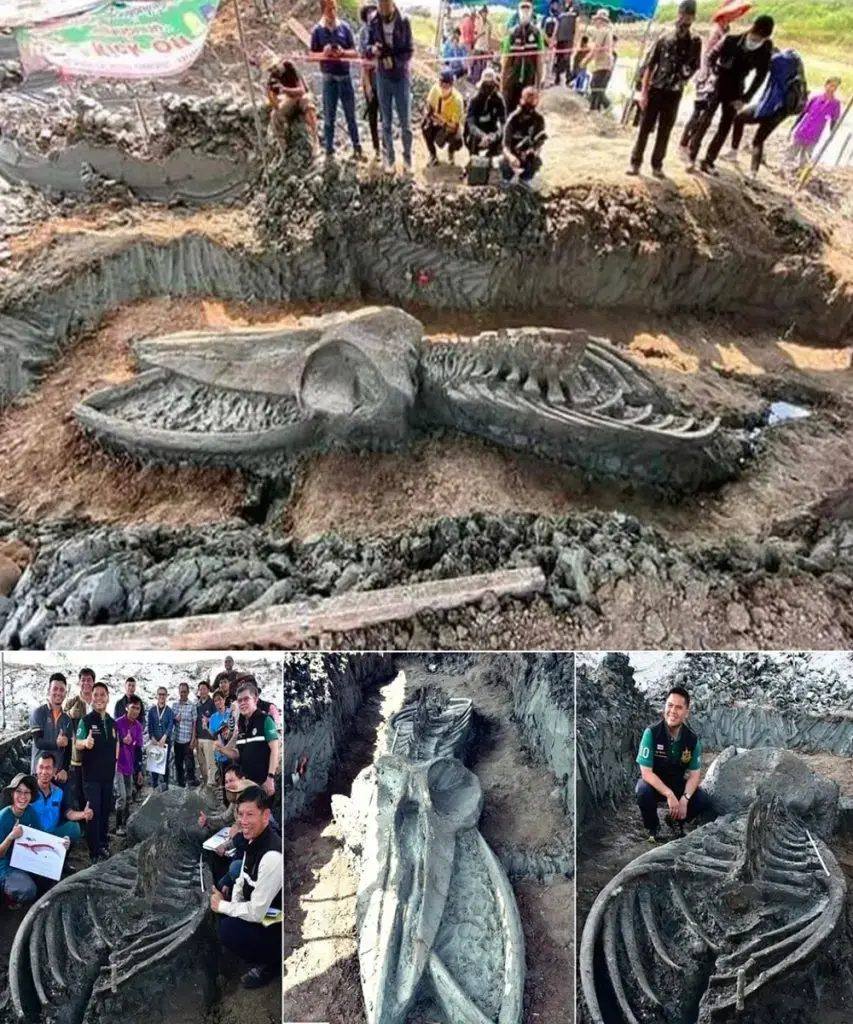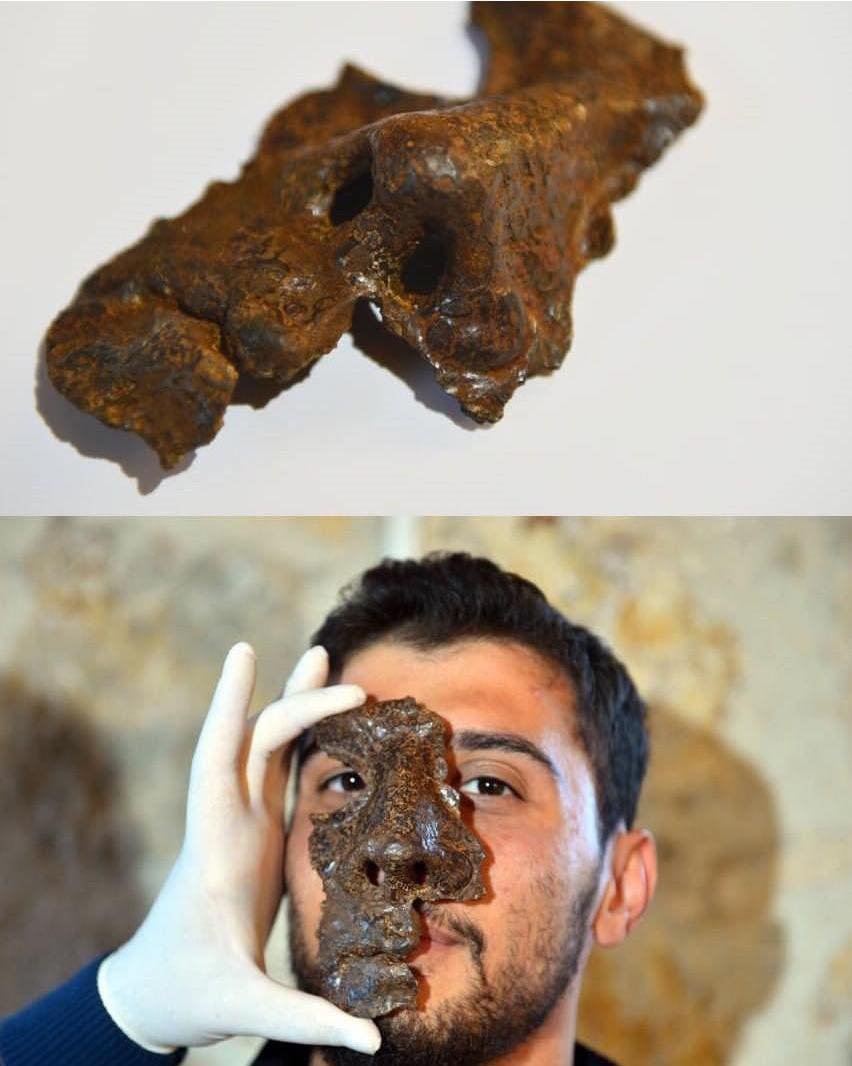Los arqueólogos informan haber descubierto cuatro espadas romanas increíblemente bien conservadas en el desierto de Judea.
Este hallazgo muy raro se realizó en una pequeña cueva escondida ubicada en una zona de acantilados aislados e inaccesibles al norte de ‘En Gedi, en la Reserva Natural del Desierto de Judea, bajo la jurisdicción de la Autoridad de Parques Nacionales. Hace cincuenta años, se encontró una estalactita con una inscripción fragmentaria en tinta escrita en escritura hebrea antigua, característica del período del Primer Templo.
 Los arqueólogos retiran las espadas de la grieta de la roca donde estaban escondidas hace unos 1.900 años en una cueva en el desierto de Judea. Crédito:Emil Aladjem/IAA
Los arqueólogos retiran las espadas de la grieta de la roca donde estaban escondidas hace unos 1.900 años en una cueva en el desierto de Judea. Crédito:Emil Aladjem/IAA
Recientemente, el Dr. Asaf Gayer del Departamento de Estudios y Arqueología de la Tierra de Israel de la Universidad de Ariel, el geólogo Boaz Langford del Instituto de Ciencias de la Tierra y el Centro de Investigación de Cuevas de la Universidad Hebrea de Jerusalén, y Shai Halevi, fotógrafo de la Autoridad de Antigüedades de Israel , visitó la cueva.
 Fotografía: Emil Aladjem, Autoridad de Antigüedades de Israel
Fotografía: Emil Aladjem, Autoridad de Antigüedades de Israel
Su objetivo era fotografiar la inscripción paleohebrea escrita en la estalactita con fotografía multiespectral que podría descifrar partes adicionales de la inscripción que no son visibles a simple vista. Mientras estaba en el nivel superior de la cueva, Asaf Gayer vio un pilum romano extremadamente bien conservado, un arma con mango en una grieta profunda y estrecha. También encontró trozos de madera trabajada en un nicho adyacente que resultaron ser partes de las vainas de las espadas.
 From right to left: Dr. Asaf Gayer, Oriya Amichay, Dr. Eitan Klein and Amir Ganor. Photography: Yoli Schwartz, Israel Antiquities Authority
From right to left: Dr. Asaf Gayer, Oriya Amichay, Dr. Eitan Klein and Amir Ganor. Photography: Yoli Schwartz, Israel Antiquities Authority
The researchers reported the discovery to the Israel Antiquities Authority Archaeological Survey Team, who are conducting a systematic scientific project in the Judean Desert caves. As part of this survey, initiated by the Israel Antiquities Authority, and in cooperation with the Ministry of Heritage and the Archaeological Office for the Military Administration of Judea and Samaria, hundreds of caves have been investigated over the past six years, and 24 archaeological excavations have been carried out in selected caves, with the aim of saving the archaeological remains from the hands of looters.
The Judean Desert Cave Survey team, together with Asaf Gayer and Boaz Langford returned to the cave and carried out a meticulous survey of all the crevices in the rock, during which they were astonished to find the four Roman swords in an almost inaccessible crevice on the upper level of the cave.
Experts say the four swords are 1,900-year-old and most likely from Bar Kochba revolt that lasted from 132 to 135 C.E. Also called the Second Jewish Revolt, it was a Jewish rebellion against Roman rule in Judea led by rebel leader Simon Bar Kochba.
The most plausible scenario is that the swords were hidden in the cave sometime during the revolt, as it was dangerous for Jews to be found with Roman weapons.
“Finding a single sword is rare—so four? It’s a dream! We rubbed our eyes to believe it,” say the researchers.
The swords were exceptionally well preserved, and three were found with the iron blade inside the wooden scabbards. Leather ᵴtriƥs and wooden and metal finds belonging to the weapons were also found in the crevice. The swords had well-fashioned handles made of wood or metal.
The length of the blades of the three swords was 60–65 cm, their dimensions identifying them as Roman spatha swords, and the fourth one was shorter with c. 45 cm long blade, identified as a ring-pommel sword.
 Removing the swords from the cave. Photography: Emil Aladjem, Israel Antiquities Authority
Removing the swords from the cave. Photography: Emil Aladjem, Israel Antiquities Authority
The swords were carefully removed from the crevice in the rock and transferred to the Israel Antiquities Authority climate-controlled laboratories for preservation and conservation.
The initial examination of the assemblage confirmed that these were standard swords employed by the Roman soldiers stationed in Judea in the Roman period.
“The hiding of the swords and the pilum in deep cracks in the isolated cave north of ‘En Gedi, hints that the weapons were taken as booty from Roman soldiers or from the battlefield and purposely hidden by the Judean rebels for reuse,” says Dr. Eitan Klein, one of the directors of the Judean Desert Survey Project.
 At work in the cave. Photography: Hagay Hamer, Israel Antiquities Authority
At work in the cave. Photography: Hagay Hamer, Israel Antiquities Authority
“Obviously, the rebels did not want to be caught by the Roman authorities carrying these weapons. We are just beginning the research on the cave and the weapon cache discovered in it, aiming to try to find out who owned the swords, and where, when, and by whom they were manufactured. We will try to pinpoint the historical event that led to the caching of these weapons in the cave and determine whether it was at the time of the Bar Kokhba Revolt in 132–135 CE.”
Following the discovery of the swords, an archaeological excavation was undertaken in the cave by the Israel Antiquities Authority, directed by Eitan Klein, Oriya Amichay, Hagay Hamer, and Amir Ganor. The cave was excavated in its entirety, and artifacts dating to the Chalcolithic period (c. 6,000 years ago) and the Roman period (c. 2,000 years ago) were uncovered.
 Conservators Ilan Naor and Lena Kupershmidt with the swords. Photography: Emil Aladjem, Israel Antiquities Authority
Conservators Ilan Naor and Lena Kupershmidt with the swords. Photography: Emil Aladjem, Israel Antiquities Authority
At the entrance to the cave, a Bar-Kokhba bronze coin from the time of the Revolt was found, possibly pointing to the time when the cave served for concealing the weapons.
 Archaeologists Oriya Amichay and Hagay Hamer with one of the swords found in the cave. Photography: Amir Ganor, Israel Antiquities Authority
Archaeologists Oriya Amichay and Hagay Hamer with one of the swords found in the cave. Photography: Amir Ganor, Israel Antiquities Authority Photography: Emil Aladjem, Israel Antiquities Authority
Photography: Emil Aladjem, Israel Antiquities Authority
The preliminary article on the swords is now published in the volume ‘New Studies in the Archaeology of the Judean Desert: Collected Papers’ and will be launched this evening (6.9) in Jerusalem at an insightful event!
¡El libro ‘Nuevos estudios sobre arqueología del desierto de Judea: artículos recopilados’ se presentará (6.9) en Jerusalén en un evento revelador! Además, se presentarán las espadas comentadas anteriormente.


